
Transcripted Summary
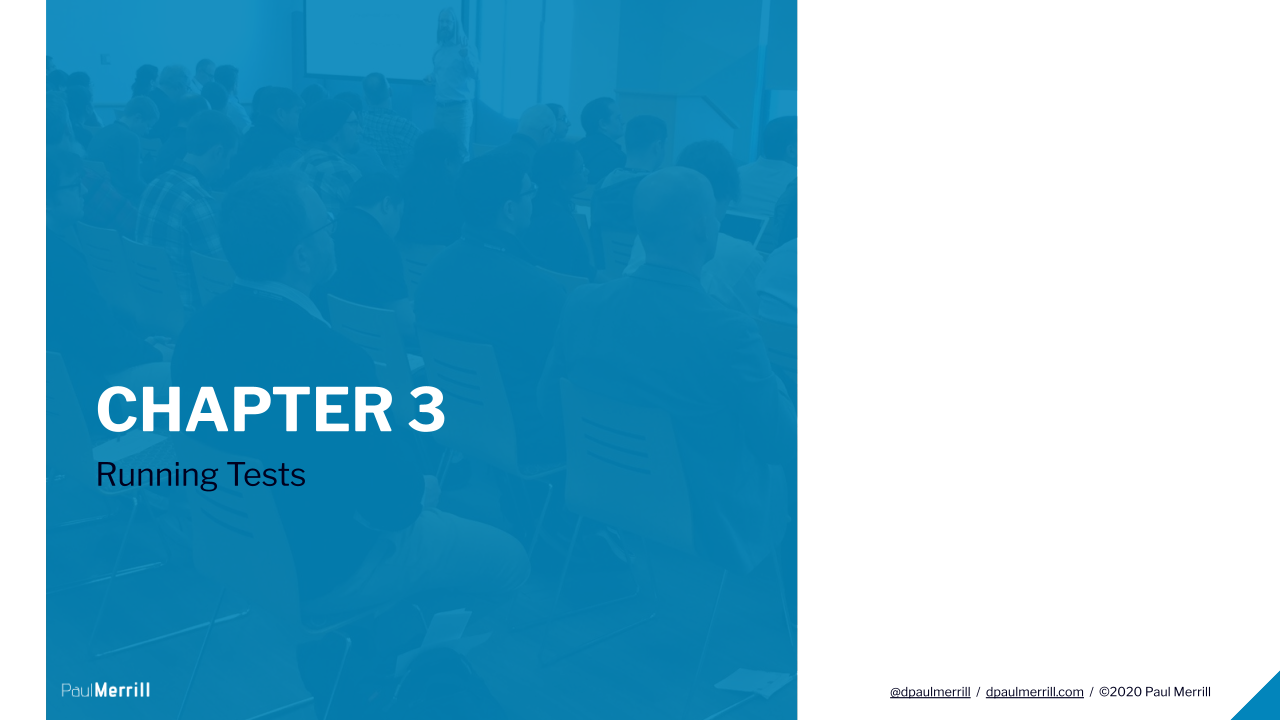
Chapter 3, running tests.
As I mentioned, make sure to download or clone the repository.
We'll be using the 001-DemoOfRobotFramework directory. Each exercise in this repository has its own directory.
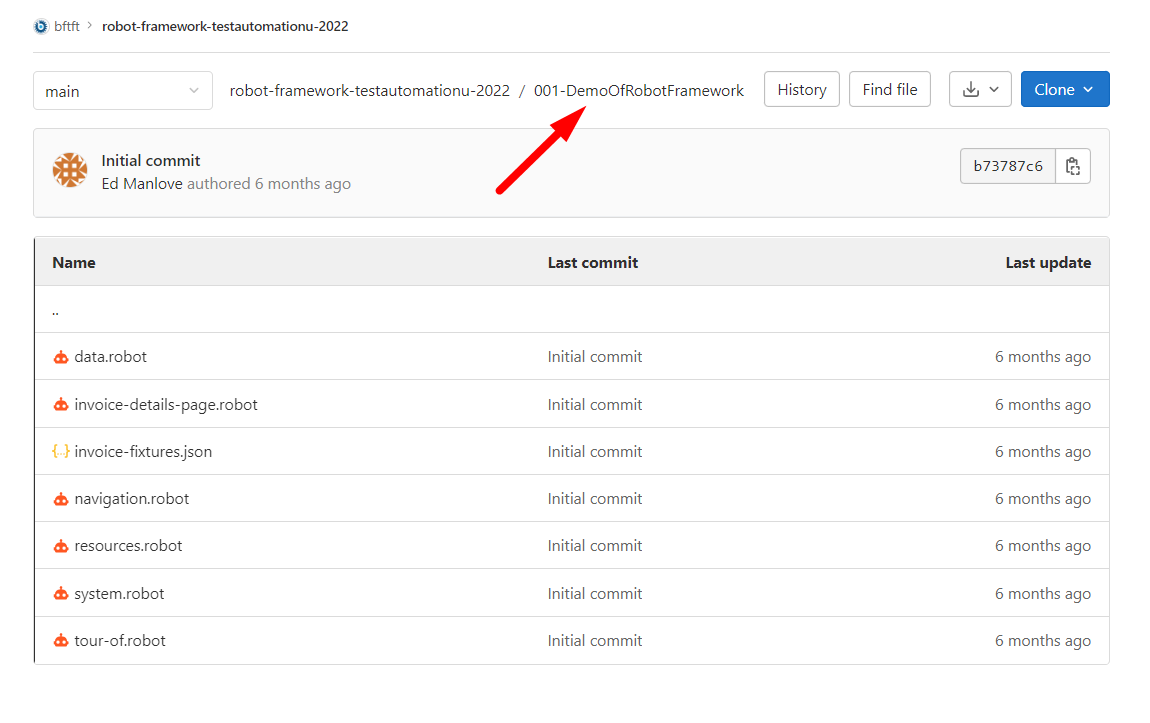
You'll notice within the _001-DemoOfRobotFramework _directory, there's a tour-of.robot file. This is the one we'll be using first.
Notice I'm using DOS. We'll be using the command line quite a bit with Robot Framework. If you need a cheat sheet for DOS or for Linux, take a look at the beaufortfairmont.com website and download one.
The command for running Robot Framework tests is robot.
I use robot and then the name of the file — robot tour-of-robot.
Since this runs with the SeleniumLibrary, try not to interact with the keyboard or the mouse until the test finishes.
You may notice here that we're interacting with an application on the web that my folks have created.
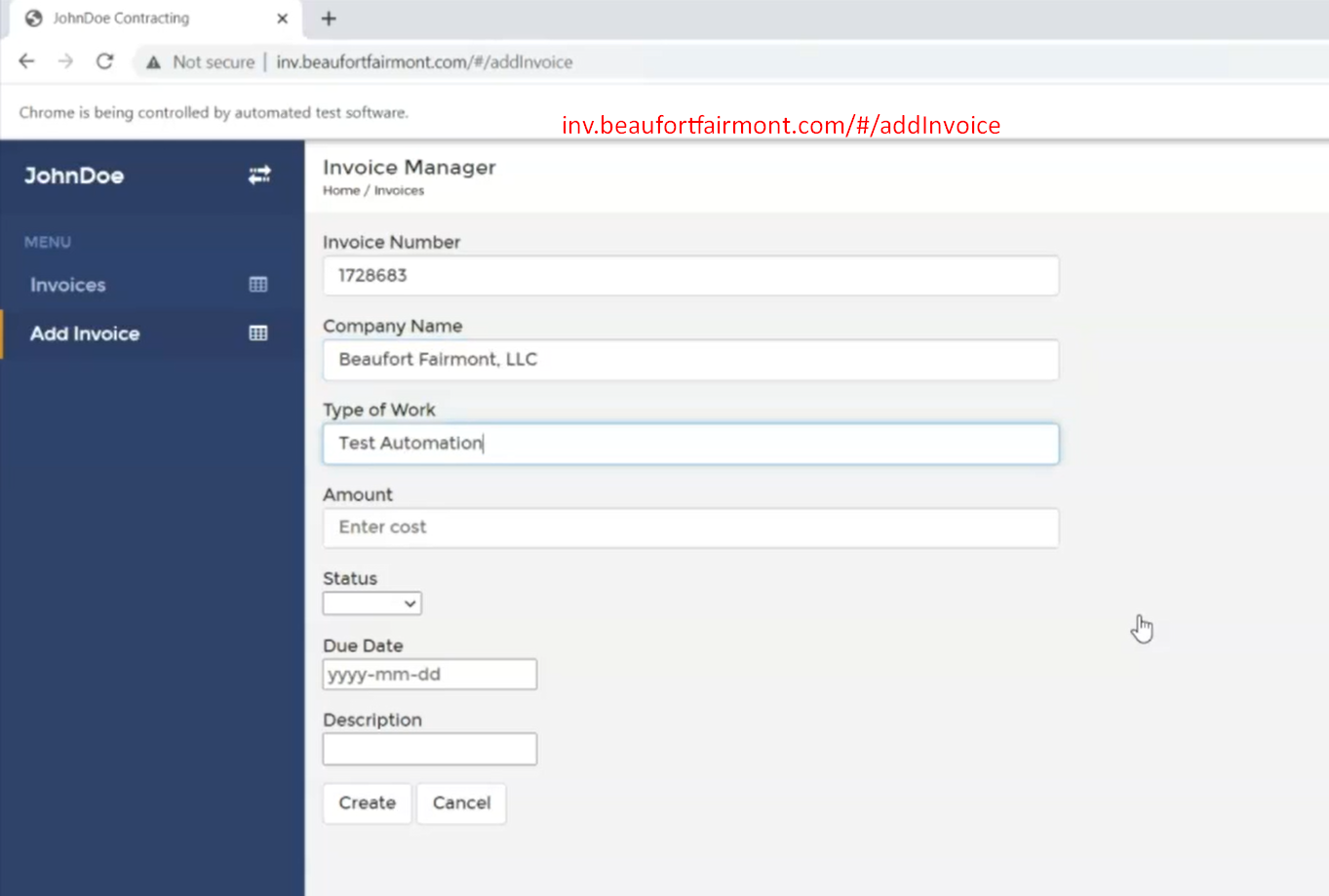
It's an invoice manager. It manages invoices. There's really not a lot to it.
NOTE
If you'd like to look at it deeper, drill down into the test cases and get the URL (http://inv.beaufortfairmont.com/#/addInvoice) and take a look.
After the test runs, notice we see that it passed in the output, and we can also see several lines of output.
We see the Output, the Log, and the Report.
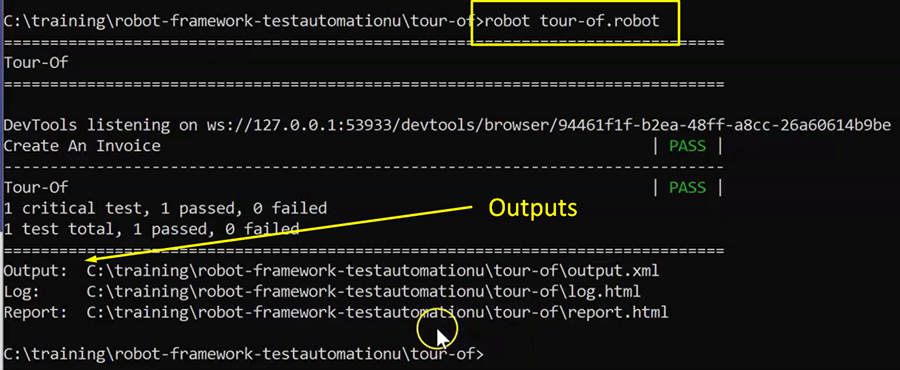
The report is the one you're going to want to look at first.
**I'm copying the path to the report on my local machine and pasting it into a new tab on my browser. **
The report is going to come up green or red depending on whether the test case passed or failed.
In this case, it's green because it passed.
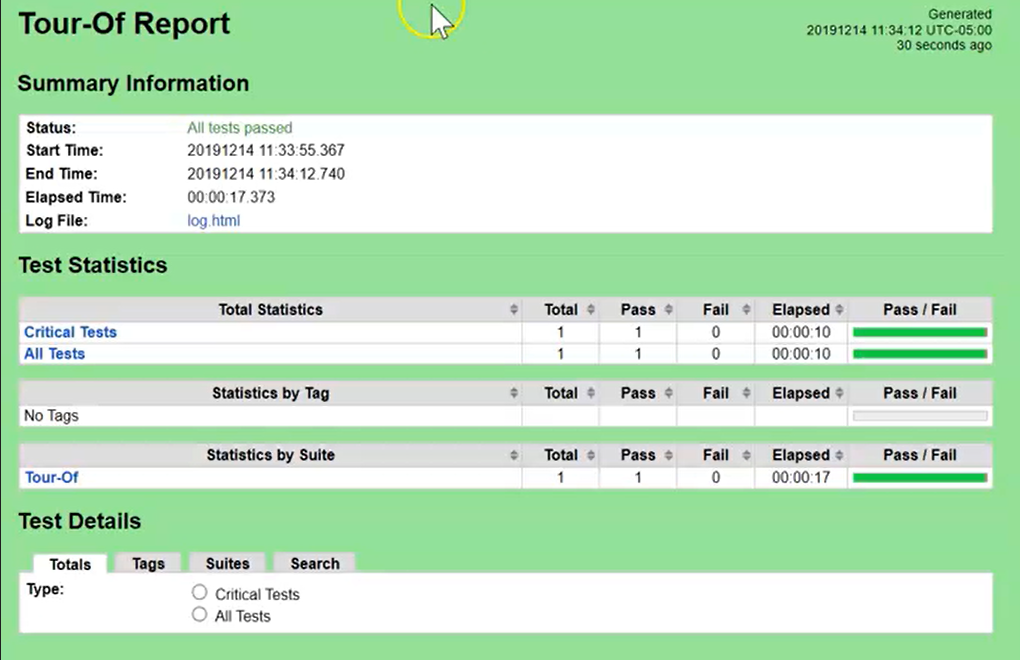
You can click on the links and drill down into a specific test case and look at the steps that were executed there.
Any step that fails will show up as red.
This is one of the great benefits of Robot Framework. It has very clear output in a nice browser-based form.
This has been how to run a Robot test.
Resources
- Git Repo: 001-DemoOfRobotFramework
- Robot Framework Cheat Sheet
- Application Under Test –Invoices Application
